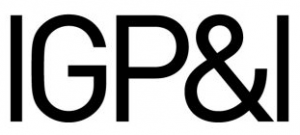California’s Marine Invasive Species Program – a recap
The California Marine Invasive Species Program (MISP) is designed to prevent, and eventually eliminate, the introduction of non-indigenous species into State waters. The program is administered by the California State Lands Commission (SLC). The MISP began in 1999 with the passage of California’s Ballast Water Management for Control of Non-indigenous Species Act, which addressed the threat of species being introduced by vessels arriving at California ports. Since that time the California Legislature has expanded the scope of the program to also include ballast water discharge performance standards and the regulation of vessel biofouling. For more information, please visit the MISP website.
Biofouling management requirements
California’s biofouling management requirements are stipulated under Article 4.8 of the California Code of Regulations. The regulation applies to vessels that are 300 gross registered tons and above that carry, or are capable of carrying, ballast water. Its principal components include:
Vessel specific Biofouling Management Plans and Biofouling Record Books that are consistent with components of the IMO Biofouling Guidelines.
Strategies to manage biofouling on vessel’s wetted surfaces, including hull and niche areas. Niche areas include recesses, appendages, and other wetted vessel surfaces of the vessel that are more susceptible to biofouling due to structural complexity and inadequate protection by antifouling or foul-release coatings and other antifouling systems.
Management of biofouling after extended idle periods, i.e. when a vessel remains in the same location for 45 days or more.
Submission of the Annual Vessel Reporting Form.
For additional information about California’s MISP, including the State’s recently amended ballast water management requirements, please refer to our alert “California adopts federal ballast water discharge standards” of 11 November 2021.
Biofouling webinar – lessons learned
In October 2018, the California State Lands Commission (SLC) gave a webinar to share its experience from the first year of enforcing the new biofouling regulations. At the time, the SLC reported that most biofouling deficiencies have been related to issues with:
the effective coating lifespan requirements; and
dry-dock support strips management, which is one of the niche areas mentioned in the regulations.
According to the SLC, some vessels present their IMO AFS Certificate or manufacturers product data sheets as evidence of the vessel’s effective coating lifespan upon arrival. However, the AFS Certificate only verifies that the vessel does not have a harmful anti-fouling system, and a product data sheet says nothing about the vessel specific application of the anti-fouling coating. The SLC therefore highlights the importance of documenting, in the vessel’s BMP, details such as the type of anti-fouling coating applied for each section of the vessel, its manufacturer, dry film thickness, expected life time as determined by the manufacturer, etc. A statement from the coating manufacturer to this effect could also be presented.
Niche areas, such as sea chests, bow thrusters, propeller shafts, inlet gratings, dry-dock support strips, etc., are hotspots for extensive communities of biofouling organisms which must be properly managed. According to the SLC, the most problematic niche area is the dry-dock support strips. Many vessels apparently lack a proper strategy for how this niche area shall be managed. One solution proposed by the SLC is to plan for the dry-dock support strips to be placed in different locations at each dry docking, hence allowing the complete area of the vessel’s hull to be coated at regular intervals.
Recommendations
Biofouling management is an important issue for several reasons. In addition to potential transfers of marine invasive species, fouling on a vessel’s hull significantly reduces hydrodynamic performance, increases fuel consumption and impacts vessels’ emissions. Lack of an international regulatory framework has prompted several local governments to act and develop unilateral biofouling regulations and California is one example. Another example is New Zealand, where all vessels arriving in the country are required to have a clean hull in accordance with its Craft Risk Management Standard for Biofouling (CRMS).
Members and clients are therefore advised to review their vessels’ BMPs, make sure each BMP outlines an effective biofouling compliance strategy for the vessel in question and that it contains all the details required to ensure compliance with any local regulations at force. For vessels trading to California ports, it may be necessary to revise those sections of the BMP that deal with issues related to effective coating lifespan and dry-dock support strips in order to ensure compliance.
Remember, an up-to-date BMP and Biofouling Record Book will assist government officials to quickly and efficiently assess the vessel’s potential for biofouling risk and thus minimise any delays to vessel operations.



